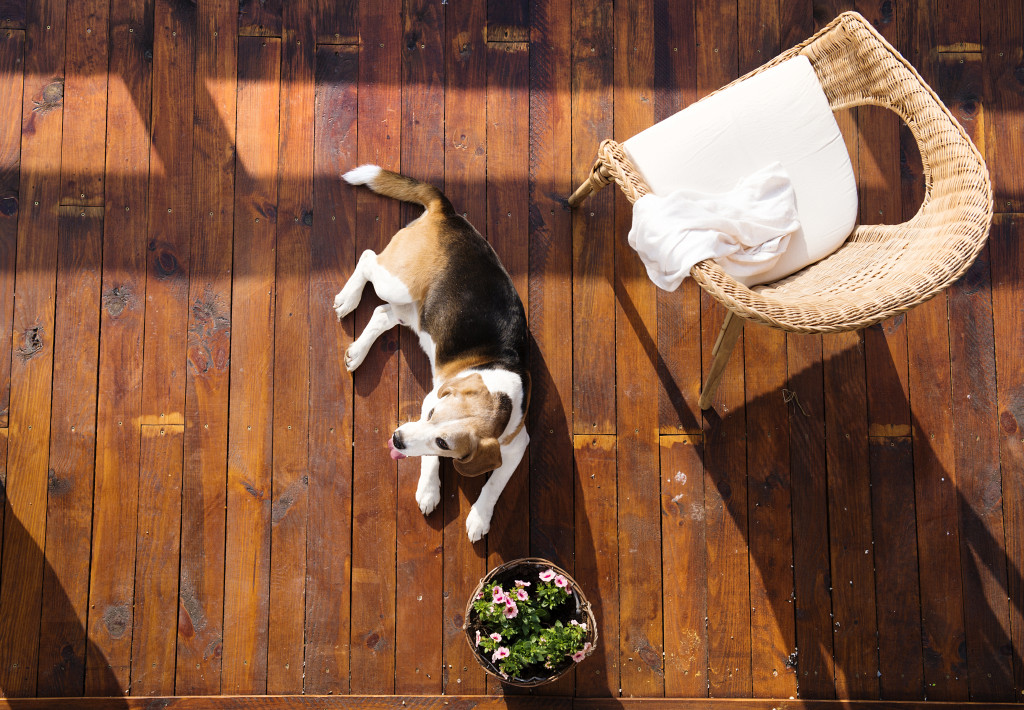• Be aware of common hazards in the home, such as electrical cords, cleaning supplies, uneven stairs, window treatments, and toxic plants.
• Make your home pet-friendly by crate training and childproofing areas where they may be present.
• Protect the floors with a polyurea coating to make them slip-resistant and scratch-proof.
• Avoid toxic plants or store them out of reach if you keep them in the home.
• Secure toilet garbage cans and lids to prevent your pet from getting into dangerous items.
As a pet owner, you want your furry friends to stay safe and healthy. Unfortunately, accidents can happen, including injuries that occur inside the home. You should take several safety measures to help prevent unintended (and potentially serious) issues from occurring. Here are things you should know.
Pet Hazard at Home
Knowing the potential hazards in a typical home is important, as some may not be obvious. Some of the more common ones include:
- Electrical cords and outlets—Pets can easily get tangled in electrical cords or even chew on them, leading to electrocution.
- Cleaning supplies—Common cleaning supplies, such as bleach or detergents, can be hazardous if ingested by a pet.
- Uneven stairs—These could cause your pet to trip and injure themselves if they’re not careful.
- Window treatments—If your pets are allowed to roam freely in the home, loose window curtains or blinds could become a strangulation hazard.
- Toxic plants—Make sure that any indoor plants you have won’t harm your pet if ingested.
- Slippery floors—Floors with slippery surfaces, such as tile or hardwood, could lead to slips and falls that may cause development problems, especially for puppies.

Keeping Your House Pet-Friendly
If you have issues with your pet’s safety in the home, it’s time to take action and make your home pet-friendly. Here are some tips on how to do this:
Crate Training
Crating your pet is a great way to ensure their safety when you’re not around to supervise them. It also helps with house training and keeps furniture from being damaged. When crate training your pet, make sure you use an appropriate size crate that allows them to stand up and turn around without bumping into the sides or roof of the crate. Also, place a soft blanket or cushion inside so they have something comfortable to rest or sleep on. Additionally, it’s important not to use the crate as punishment; instead, make it a fun place for your pet by adding treats and toys.
Childproofing Your Home
If you have young children, take extra measures to childproof areas where pets may be present. This includes putting away any food items they may find attractive and ensuring that cleaning supplies are stored out of reach so your pet doesn’t accidentally swallow something toxic when exploring (or worse—your kids don’t get into anything dangerous). Make sure any appliance cords are tucked away so curious paws can’t get tangled up in them.
For your floors, applying polyurea coating is ideal for making them more pet-friendly. This coating creates a protective, slip-resistant surface for your floors. It also helps to protect against scratches, spills, and other wear and tear from everyday use or your pets’ daily activities. This will help you keep your floors looking great while providing a safe environment for your pet.
Avoid Toxic Plants
When bringing plants into the home, ensure they are safe for pets. Plants such as lilies, daffodils, oleander, and certain types of ferns can cause serious issues if ingested. If your pets are free-roaming, it’s better to steer clear of these plants entirely. If you want to keep them in the home, place them in an area your pet won’t be able to access. If possible, opt for artificial versions or only purchase those safe for animals if keeping live ones in the house.

Keep Garbage Cans Secure
Garbage cans should be securely closed and stored out of reach to prevent your pet from getting into them. Garbage can contain items that could poison or choke them, such as bones, plastic bags, and food wrappers. Additionally, remember to keep the lids on all toilets, so curious cats don’t go for a swim.
Invest In Pet Insurance
Accidents can happen even when we take all the necessary precautions. That’s why investing in pet insurance is a wise decision for any pet owner. Pet insurance helps to cover the cost of vet visits and treatments in case your pet gets injured or sick. With the right plan, you won’t have to worry about the financial burden of caring for your pet if something were to happen.
Keeping your pet safe at home is an important part of responsible ownership. Some simple steps can significantly reduce the risk of accidental injury in your home. All these steps will help ensure your family members (both two-legged and four-legged!) stay safe and sound!

